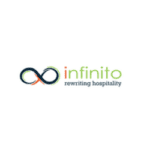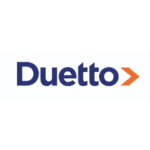Thanks to ever-growing technologies, hoteliers now have many opportunities to adopt a more customer-centric approach in pricing.
 Looking back on the history of hotel pricing strategies, nothing really stands out until the early 80s. Before the deregulation years, most hotels stuck to a traditional model of rates, based on economic fundamentals, such as cost price and profit margin.
Looking back on the history of hotel pricing strategies, nothing really stands out until the early 80s. Before the deregulation years, most hotels stuck to a traditional model of rates, based on economic fundamentals, such as cost price and profit margin.
The rise of neo-liberalism allowed for ambitious and previously unseen business tactics. One of them, first developed in the context of airlines, was the variable pricing strategy known as Yield Management. Understandably, Yield Management was a true game-changer which quickly generated large profits for lots of companies in multiple industries, and was propelled to a whole other level thanks to the digital revolution.
Just as deregulation and the digital revolution gave birth to Yield Management, the current hospitality climate is ripe for disruption and innovation
The rise of OTAs, Airbnb and changing traveling habits (especially for Millennial travelers) have without a doubt made the life of many hoteliers more difficult over the last few years and, thus, call for new approaches in revenue management.
Instead of solely relying on economic and internal indicators to set a hotel room’s price, hoteliers – thanks to ever-growing technologies – now have many opportunities to adopt a more customer-centric approach. Theoretically-speaking, it is nowadays completely imaginable to directly collect inputs from various target audiences. Indeed, what’s the point of going through many layers of information to try to determine the ideal match between offer and demand, when you could just reverse the process and find out where the demand stands right away?
This approach appears trivial as it would be impossible to accept every single price potential guests are willing to pay; between ridiculously low offers, jealous customers and/or bad decisions, safeguards are needed to keep a strategy within reason. That’s where the negotiation part begins.
Tapping into negotiation for your pricing strategy
Negotiation is a loaded term as it might bring up negative preconceptions, such as being laborious, time-consuming, etc. But once we get past these assumptions (some of which can be greatly mitigated as we’ll see later), it becomes clear that, more often than not, this process can bring about a win-win outcome and create great value for both a hotelier and a guest. How so?
Delivering a personalized booking experience
One major transformation we mentioned earlier is the change in travel habits, especially for the Millennial generation. Studies show that people born between the 1980s and 1990s, and this can stretch further, are much less responsive to the harmonized yet impersonal nature of big hotel chains. They seek personal experiences above everything else; their trip has to be unique and special. And this starts as early as the booking process.
When going through a negotiation process, customers instantly feel like they are no ordinary consumers. By nurturing the positive perception they are a truly valuable guest – so much so that said hotel is willing to adapt its rates for them – hoteliers tapping into negotiation basically send the strong message that they not only acknowledge a guest’s request but that they act upon it — from the get-go.
Overcoming cognitive bias
In psychology, a cognitive bias is recognized as a pattern of deviation from judgment due to individuals creating their own subjective reality. Simply put, it’s when someone acts in a narrow-minded, non-rational way because of an experience that distorted their decision-making process.
This principle applies particularly well in negotiation-base pricing. Indeed, once guests are engaged in the negotiation process, they feel a certain sense of commitment to a hotel. As they already put the time and effort to go through a discussion with an establishment, customers are less likely to be willing to abandon all the laborious work they did to come to an agreement about the price, which in turn translates into a better transformation rate on the hotel’s end.
This is not unlike the principle of sunk costs fallacy in economics, which states that the more financially (in our case emotionally) invested a person is in a project, the less likely they are to make good, rational decisions.
Maximizing a hotel’s occupancy rate
One of the most important metrics in the hotel industry is the Occupancy Rate (OR). This is mainly because empty rooms are at a real cost for the hotelier. And since the marginal cost (mainly cleaning, linen, disposables) of a hotel room is usually rather low, hoteliers are generally looking to maximize their OR at all costs. But that’s where most hotels hit a major wall, known as the risk of image.
Indeed, even though they might want to lower their price to sell more rooms, hoteliers are not willing to risk giving their hotel a bad reputation by publicly displaying very low prices. This situation can be depicted as follows:
Negotiation is a good way to go around this major problem. Indeed when going through this process, hotels are not publicly jeopardizing their reputation as the agreed-upon deal remains private. This way, hotel managers can easily go under the market price line and agree on discounted prices as long as they stay above their marginal price (orange).
What better way to maximize a hotel’s OR and, by doing so, drastically increase revenue?
Negotiation-based pricing: the future of hotels’ direct bookings?
The most popular modern example of auction-based pricing is eBay which revolutionized the way people shop over the past two decades. More recently bidding strategies have become the way of business in media-buying, with platforms such as Facebook and Google leading the way. Art or wine dealers have also greatly started to tap into the opportunity created by new technologies to recreate auction experiences online, across various platforms. The hotel sector, however, has not seen any major breakthrough… yet.
It is true there are legitimate obstacles raised by negotiation-based pricing for hotels. The natural human reluctance to engage in negotiation (some people just don’t like negotiation as it involves confrontation – you have to be willing to disagree with someone) or efficiency challenges (I don’t have the time to engage in negotiation for every single room in my hotel or I’m just not good at negotiating).
These hold true when engaging in negotiation-based pricing manually. But who said it can’t be automated?
According to Meng-Mei (Maggie) Chen, assistant professor at Ecole hôtelière de Lausanne, negotiation-based pricing is another sign of hoteliers’ efforts to obtain more direct bookings. Although a paying strategy for hoteliers ideally lies in the search for opportunities to earn premium revenues, combining negotiation-based pricing and attribute-based selling could counter the trend of discounted sales from indirect channels.
A hotel positioning itself as a local concierge by providing customers customized packages option, while offering the opportunity to negotiate these tailored packages creates a win-win situation.
Imagine a multi-generational traveler group demanding a mini-bus and a driver for a few days, special amenities for the young mother and baby, a wheelchair for the grandfather and presented with the opportunity to negotiate the rate of the whole experience: that is a truly customer-centric approach.



















